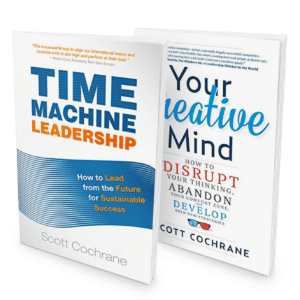
Lessons to Leverage Conflict to Boost Results
The conference room was emotionally charged with a couple of executives vehemently arguing their point of view, contradicting what they had previously agreed, “throwing each other under the bus” to avoid blame in front of the boss. Voices rose, fists slammed the table and fingers pointed accusingly. It had gotten personal. Colleagues caught in the crossfire shrank away, staring at their phones.
In other cases, conflict is less overt. Someone feels offended by something a colleague said or did, then goes out of their way to avoid interaction with that person. Cohesion, collaboration and camaraderie suffer. It’s difficult for anyone to be creative and solve problems when they’re looking over their shoulder in fear and mistrust. And it comes with a big cost.
A study commissioned by CPP Inc. a few years ago estimated that conflict in the workplace cost US employers $359 billion in a single year — the equivalent of 385 million working days. They defined conflict as “any workplace disagreement that disrupts the flow of work.”
When it is poorly managed, conflict harms productivity and an organization’s ability to pull together toward common goals. Like many issues related to stress, it goes back to how we are hardwired.
When we clash with others, it triggers our primal instincts.
Our opinions and stances feel like territory we have to guard. Our default response may be to fight, flee, or hide.
Many people are conflict-averse and go out of their way to avoid disagreements. This passive response manifests in people nodding their heads in agreement with something they don’t really agree with or buy into. Lack of commitment shows up in missed deadlines and opportunities, leading to more conflict.
Conflict is inevitable in life and business, but it doesn’t have to be destructive. In fact, it can become a path toward greater trust and cohesion, when the proper guardrails are in place. This is possible when we learn to better manage how we and our teams handle conflict. It starts with redefining how we think about conflict.
Conflict does not have to mean a fight, or even an argument. When you unplug from the emotions surrounding it, conflict boils down to a difference of opinions or points of view about the same subject.
Changing our relationship with conflict starts with understanding that we can choose how we respond.
In every situation where conflict arises, we can take either a constructive or destructive path. It can become personal and turn into a fight, or it can bring us closer together as we learn to cooperate and co-create.
We each have characteristics that predispose how we approach conflict. Years ago I completed post-graduate certification at Eckerd College Center for Conflict Dynamics to help leaders determine these individual characteristics. We do this through Conflict Dynamics Profiling and self-awareness sessions. Knowing how you are predisposed to approach conflict can help you better manage it, for yourself and those around you. The more we practice conflict in a healthy way, the more comfortable we become with it.
In the spirit of making conflict more productive and less destructive, here are seven ways you can leverage it for better results.
- 1Pause Rather Than React – Take time out when emotions are running high, letting matters settle down before you respond.
- 2Broaden Your Perspective – Put yourself in the other person’s position and try to understand their point of view.
- 3Reflect – Analyze the situation, weighing the pros and cons, and consider the best response.
- 4Reach Out – Make the first move, expressing your desire to find a solution.
- 5Express Emotions – Talk honestly and express your thoughts and feelings.
- 6Create Shared Solutions – Brainstorm with the other person, asking questions, and trying to create solutions together.
- 7Adapt – Stay flexible and focused on making the best of the situation.
Changing our default response to conflict takes awareness and practice. To truly embrace conflict, we must train ourselves to detach from it emotionally and access our “higher” self — our caring, wise, intuitive side.
When we do that, we can usually find a win-win solution, meaningful learning, or hidden opportunity in even the most challenging situations.




